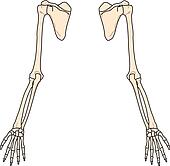Image: 

Summary: This week we learned about volume, density, mass, and a water displacement method. Volume is the amount of space that an object takes up or a space within an object. Density is how tight something is or how many things are in a certain amount of space. Density can also be mass over volume. Then mass is the amount of matter within a space. Then we did a water displacement method. First you fill a graduated cylinder up to milliliters. Then you put in what you want to measure in the cylinder. Lastly you see how much the water went up and that's your volume for that object.
SP5: Using mathematics and computational thinking:
Mathematical and computational approaches enable prediction of the behavior of physical systems along with the testing of such predictions.
Did you perform any math calculations?
Answer: Yes we preformed math calculations because we did an experiment in class. The experiment required a formula of how high 10 pennies was. Another one was when we had to find the density by using mass over volume.





